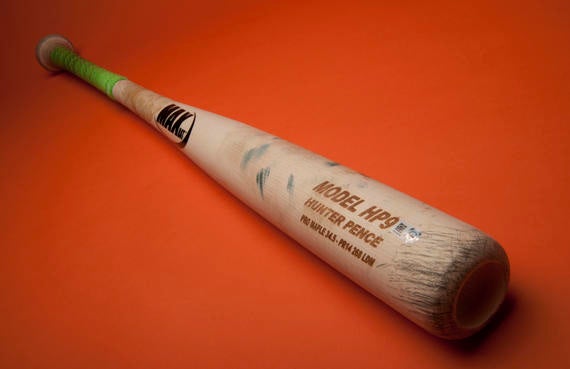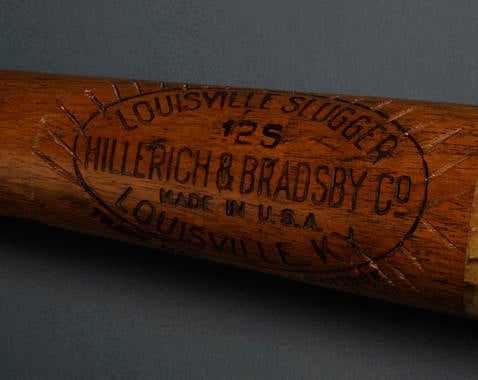The National Baseball Hall of Fame and Museum collected its first bat in 1937. And not surprisingly, baseball lumber continues to be some of the most evocative and memorable artifacts in the archive.
The eighty-second artifact to enter the permanent collection, the original bat was an 1860’s era crafted piece of wood with thickly wrapped twine around the handle. There are no identifying marks on the bat and it is the anonymity that makes it unique. We don’t know who used the bat but it came from the Cooperstown area and is presently featured in the “Taking the Field” exhibit on the second floor of the Museum. The bat is a great example of those produced in the 19th Century and points to the fact that the Museum is interested not only in Major League Baseball material but all things baseball.
Today, the Hall’s collection of bats totals over 2,000 with approximately 10 percent currently on display. These bats not only assist in telling the stories behind the milestones but they also teach visitors about the change in equipment over time from the 19th Century to the present. Every artifact has a story to convey and the details can be quite compelling.
Because the Hall does not purchase artifacts for the collection, material enters the building from a number of sources. Players and teams contribute milestone and record-setting event bats and the Hall is very pro-active in requesting material if a record is about to be broken. The players and teams have been very generous over the years in donating items to the permanent collection and we are grateful for their assistance in procuring these historical artifacts. These pieces evoke special memories for visitors who enjoy reliving significant moments in baseball history throughout the Museum.
Bats also enter the Museum from fans of the game who have collected or purchased these items over the years and wish to donate them and share them with the thousands of visitors who travel to Cooperstown each year. These bats can be miniature in size or as large as telephone poles. They can be handmade one-of-a-kind art pieces or mass produced from companies that are no longer in business. Bats can come in differing shapes and sizes and it is imperative that the Museum document the nuances that have evolved over time.






